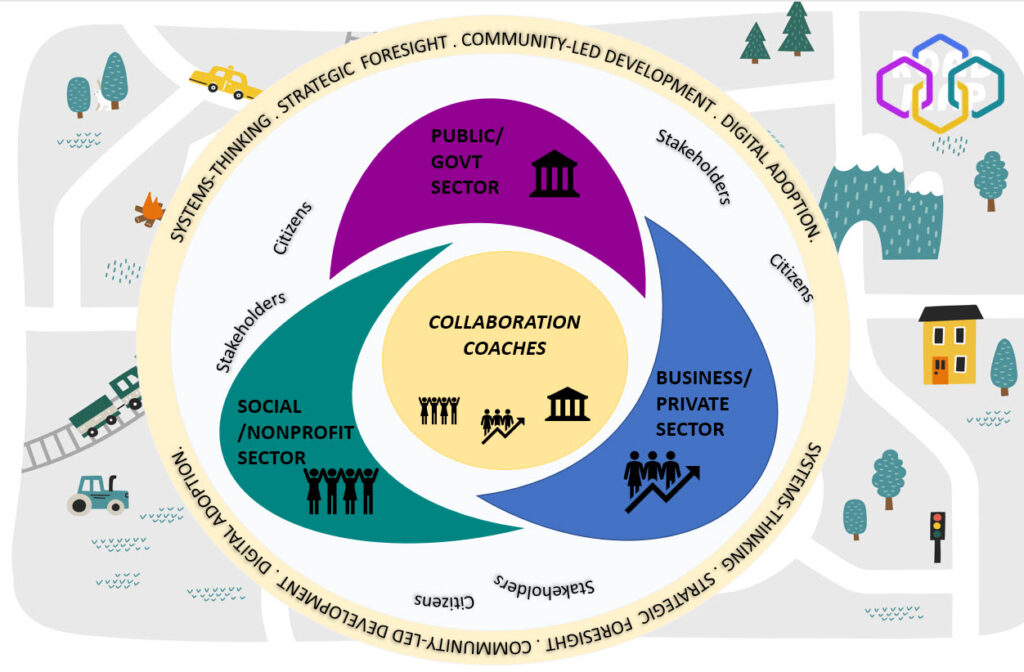
Last week I got a call from a friend who I haven’t heard from in many, many years. As we caught up, it became clear he’s done a fabulous job of developing a business that grew steadily and become very successful. Like me, he’s worked really hard and has taken risks. Whereas his path was relatively straightforward, mine was somewhat different. My track record with employers together with a sometimes painful and lonely climb, was reflected in a sketchy and eclectic employment history in corporations, social profits, education, government, and as the owner of several businesses.
Although I’m now happily self-employed as the Executive DIrector and Founder of the Collaboration Station, in hindsight it seemed I spent many years struggling to find a place that was a fit for someone with an entrepreneurial spirit who cared deeply about making a difference.
In Canada, as well as in most other countries, our economy is comprised of three sectors: (1) the public or government sector, (2) the private or business sector, and (3) the social or nonprofit sector. Unlike my friend who stayed exclusively in the business sector, I ended up working with, and across, all three sectors as I sought solutions to complex issues in our communities.
As a result, the path that led to the Collaboration Station was not only a long and winding one, it was one where the required track was often laid as the train was rolling.
In large part this was having identified that complex community issues needed an innovative and new kind of community leadership. However, it was also the result of the push and pull between wanting to make a difference, and needing to be entrepreneurial in order to make it happen.
The challenges were also about the social innovation required for a big dream that needed to incorporate elements that were relevant to all three sectors, each of which had a very different measuring stick for success.
Typically, the business sector is more apt to measure their success in terms of economic impact, whereas for nonprofits and governments, success is about being able to successfully address social issues and public good. In other words, we’ve often had to stack up money versus humanity and compassion because none of the three traditional sectors were designed to integrate both the fundamentals of business with a social or environmental mission. Of course, we need both. And yet, it seems having three sectors has meant we’ve also separated the three wth a very clear dividing line.
For the Collaboration Station, this created the challenge of struggling for years to find an infrastructure that addressed the need for both economic impact and social innovation. For me, this ended up being a social purpose business.
However, it’s exciting to know there is an emerging new sector serving as an umbrella for those of us doing this kind of work. Named the Fourth Sector, it is emerging as one that combines the market-based approaches of the private sector with the social and environmental priorities of the government and non-profit sectors in order to address pressing, often complex challenges. Endeavors in this Fourth Sector come in a wide variety of models, including for-purpose businesses, social enterprises, co-operatives, benefit corporations, etc.
As the world continues to face greater challenges each day — from increasing gaps in inequality to pandemic health threats, to a global climate crisis — growing this emerging Fourth Sector of the economy with an eye to solving the challenges of both people and planet is gaining the traction that will result in the innovation and entrepreneurship that will be essential. The synergy of a Fourth Sector will make it possible to climb mountains together to find the solutions to urgent local and global challenges.
|
